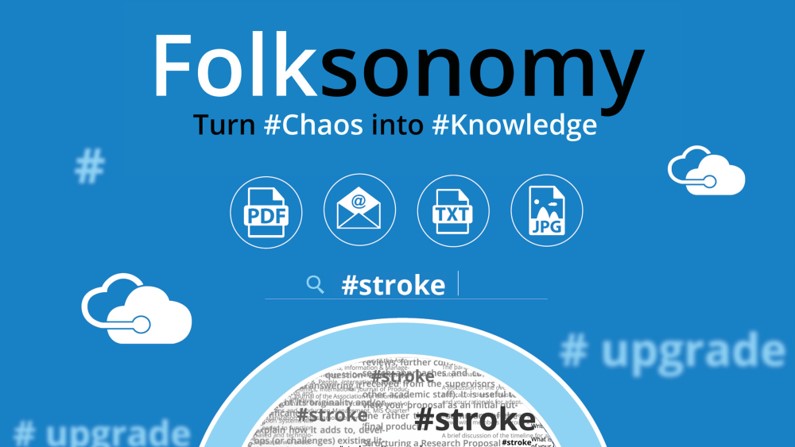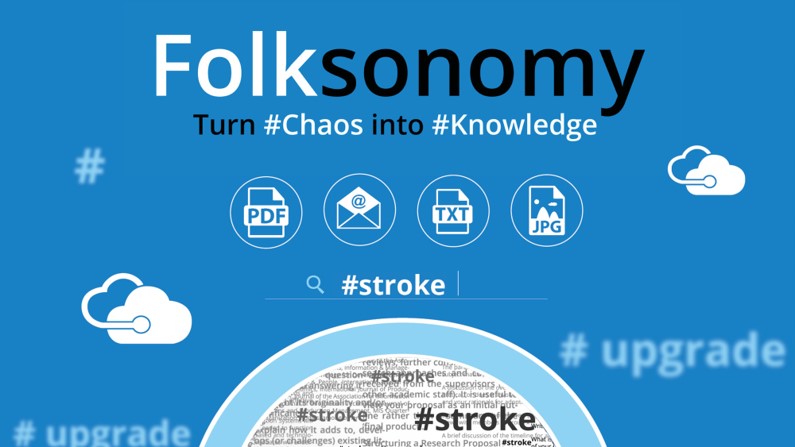Bismart carried out a text analytics project with Hospital del Mar and Grupo Ferrer. In this article we talk about its details.
Bismart Folksonomy
Folksonomy is a state-of-the-art tagging system that allows you to mine data sets and provides the information you are looking for in an instant. This system is based on folksonomy, a concept that starts from the traditional taxonomy in which categories are defined manually. In taxonomy, the labels found in the document will later be organized in the various categories. The main difference is that folksonomy makes a bottom-up classification of labels. That means that instead of determining the categories prior to the analysis, the analysis provides categories according to the frequency of appearance of the tags. Folksonomy is a little known concept, although we use it daily.

The problem
Huge amounts of data are generated daily in the clinical field. These data include medical discharges and medical records, among many other types of documents. Within these large amounts of data are patterns and information that can be of great value to management and professionals.
However, extracting this information manually is impossible, given the magnitude of the data and the fact that the highs, lows and stories are written in unstructured natural language. This was the case of the nephrology department of the Hospital del Mar in Barcelona which, together with Ferrer group, contacted Bismart to start a text analysis project that could greatly reduce the time needed to extract the information from the data.
Aim of the project
The objective of the project carried out is to understand the thousands of medical discharges available and to extract clinical intelligence from them. For this purpose, Bismart has made the Folksonomy tool available to the hospital, which allows information to be extracted from unstructured data, whether in text, image, video, audio, or other formats.
This department had generated, in a period of three years, more than 1600 hospital discharge documents. These documents, written in natural language, also presented the difficulty that each doctor used different abbreviations for the same tests, diseases or medicines, for example. This created the need for a tool to identify these words as synonyms.
Benefits of the project
The benefits that Folksonomy de Bismart has provided to Hospital del Mar and Grupo Ferrer are the extraction of knowledge from unstructured information, intelligent recommendations, acceleration of the generation of medical knowledge and reduction of variability. Specifically, thanks to the tool, they were able to identify synonyms and implications (hyperonyms), manage key words through tags, classify certain words and terms in a black or white list, among others.
In addition, the tool has allowed them to increase the rate of beneficial decisions for the patient and the system and to train professionals.
The training of professionals has taken the form of three types of big data:
- Descriptive big data: it has allowed them to evaluate health outcomes, identify previously unknown relationships, connect all data sources generated in clinical practice and recruit patients for clinical trials.
- Predictive big data: it has allowed them to predict clinical events.
- Prescriptive big data: with it they have been able to make decisions in real time based on good practices.
Results
With our tool, health professionals have been able to understand clinical practice and its variability, offer support for decision making in real time, determine the epidemiology of the population, generate clinical research hypotheses, carry out observational studies, predict clinical cases before they occur, automatically extract all the variables of the patients attended by filtering by the desired search criteria and establish non-obvious correlations.
This has been achieved through the achievement of three objectives that have been posed in the form of a question that allows:
- Objective 1: to know with which hypoglycemic treatment patients with renal disease are treated and which treatment has been changed.
- Objective 2: to find out which patients with a history of inhibitors of the angiotensin renin system carry inhibitors to discharge.
- Objective 3: To find out which patients with no history of depression are taking an antidepressant medication (ATC group N06A).
Without Folksonomy, the process of uncovering this information would have been manual and therefore very tedious and expensive and could have taken weeks. The medical professional had to read and analyze the thousands of documents and make connections between them manually.
After a process of standardization and data quality, Folksonomy de Bismart was able to answer the medical professional's questions in a few hours by extracting knowledge from the unstructured discharge data available at the hospital. Thus, the results obtained from objective 1, for example, have been that 39.91% of patients admitted to nephrology are diabetic, a total of 651, of which 89 are treated with metformin.
Bismart Folksonomy allows us to extract intelligence from any type of support, be it textual, audio, video, etc. of any subject. If you want to know more details about the product, click here.

